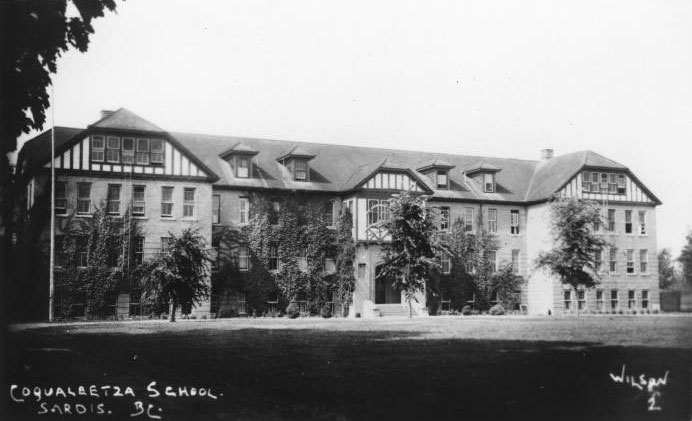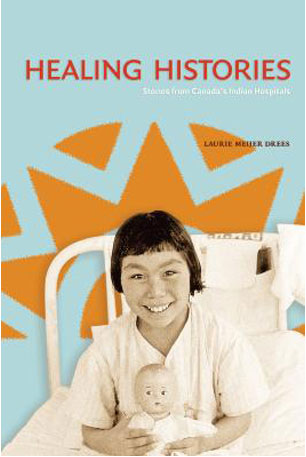“Indian hospitals emerged from deep anxieties about Aboriginal people and their perceived threat to the public’s health” (Lux, 2016).
Indian Hospitals were opened not as a genuine expression of concern on the part of the Canadian government for the health of Indigenous children, but instead to assuage fears of a percevied threat that Indigenous people posed to the non-Indigneous population. The initial purpose of these hospitals was to reduce the prevalence and spread of tuberculosis (TB).
Part of a Larger Colonial System
The hospitals were connected to the missionary hospital movement of the late 19th and early 20th centuries. The hospitals were a method of segregation and restriction, and operated in the same way as reserves and Residential Schools, as a part of the larger colonial system. Some of the early hospitals grew out of the makeshift Residential School sanitoria that had been set-up to house and quarantine child patients, as a result of the high rates of TB in schools. Often children would move from Residential School to Indian Hospital and then back to school.
Expansion of Indian Hospitals
The formal Indian Hospital system began in the 1930s, but saw its real expansion in the post-war years of the late-1940s and into the 1950s. In the 1970s and 1980s most of the hospitals closed or were converted. At least three major Indian Hospitals operated in British Columbia – at Prince Rupert (Miller Bay), Sardis (Coqualeetza), and Nanaimo.
Hospital Conditions
The hospitals were chronically understaffed and the staff onsite were often undertrained and sometimes unlicensed. The hospitals were also often overcrowded. Practices such as experimental treatment, or painful and disabling surgeries were prevalent, even at a time when general hospitals where switching to less invasive treatments for TB.
Unjust Practices
Although enforced hospitalization and physical restraining of patients was not permissible in a general hospital setting, they were considered common practice at Indian Hospitals. There were also cases of unnecessary transportation of sick patients from one hospital to another.

Find information on Indian Hospitals class action
The class-action lawsuit filed against the federal government was certified on January 22, 2020. Find information on the Statement of Claim and how to be involved.
Further resources
- Drees, L. M. (2010). Indian hospitals and Aboriginal nurses: Canada and Alaska. Canadian Bulletin of Medical History = Bulletin Canadien d’Histoire De La Medecine, 27(1), 139-161. doi:10.3138/cbmh.27.1.139
- Geddes, G. (2017). Medicine Unbundled: A Journey through the Minefields of Indigenous Health Care. Victoria, British Columbia: Heritage House.
- Harrison, C (2016). Miller Bay Indian Hospital: Life and work in a TB Sanatorium. Victoria, British Columbia: First Choice Books
- Meijer Drees, L., desLibris – Books, & Scholars Portal Books: Canadian University Presses 2014. (2013). Healing histories: Stories from Canada’s Indian hospitals. Edmonton: University of Alberta Press.
- Meijer Drees, L. (2010). The Nanaimo and Charles Camsell Indian hospitals: First Nations’ narratives of health care, 1945 to 1965. Histoire sociale/Social History, 43(85), 165-191. doi:10.1353/his.2010.0002
- Metcalfe-Chenail, D. (2020). Ghosts of Camsell – Unearthing Stories from the Charles Camsell Hospital. Retrieved from https://ghostsofcamsell.ca/
- Kelm, Mary-Ellen (1999). Colonizing Bodies: Aboriginal Health and Healing in British Columbia, 1900-50. Vancouver: UBC Press.
- Lux, Maureen K. (Maureen Katherine). (2010). Care for the ‘Racially careless’: Indian hospitals in the Canadian west, 1920–1950s. The Canadian Historical Review, 91(3), 407-434. doi:10.1353/can.2010.0018
- Lux, M. K. (2016). Separate beds: A history of Indian hospitals in Canada, 1920s-1980s. Toronto: University of Toronto Press.

